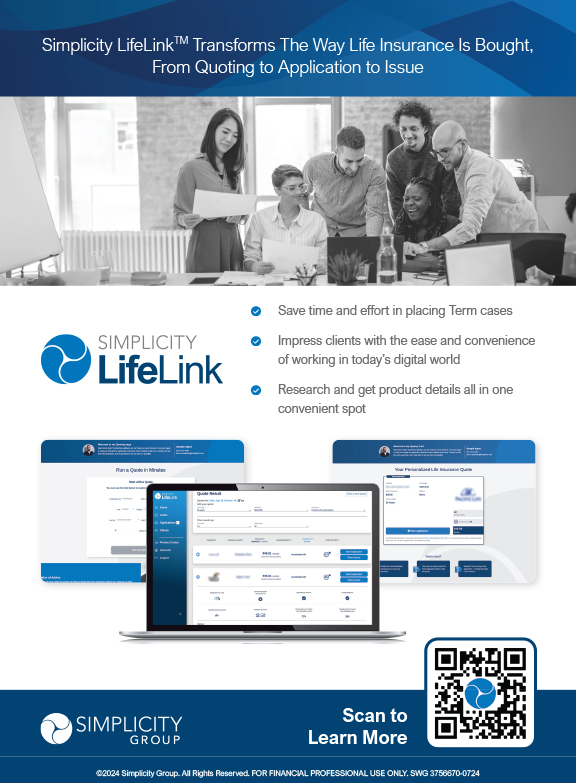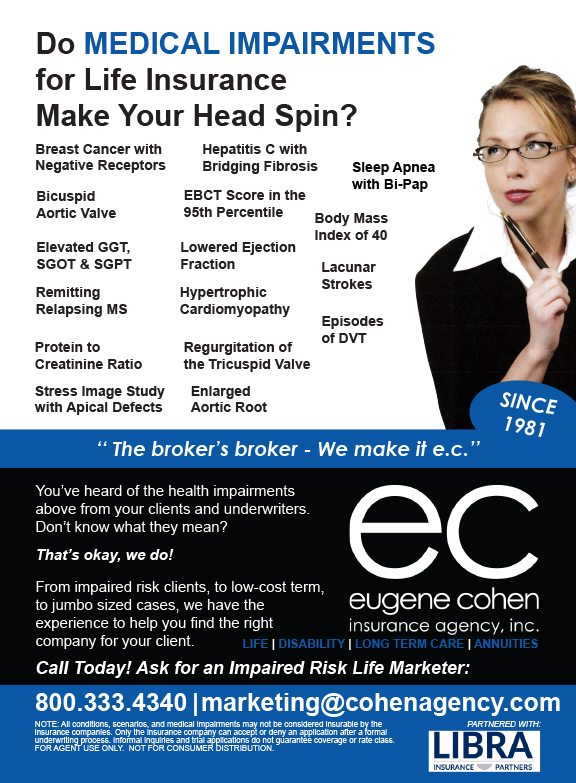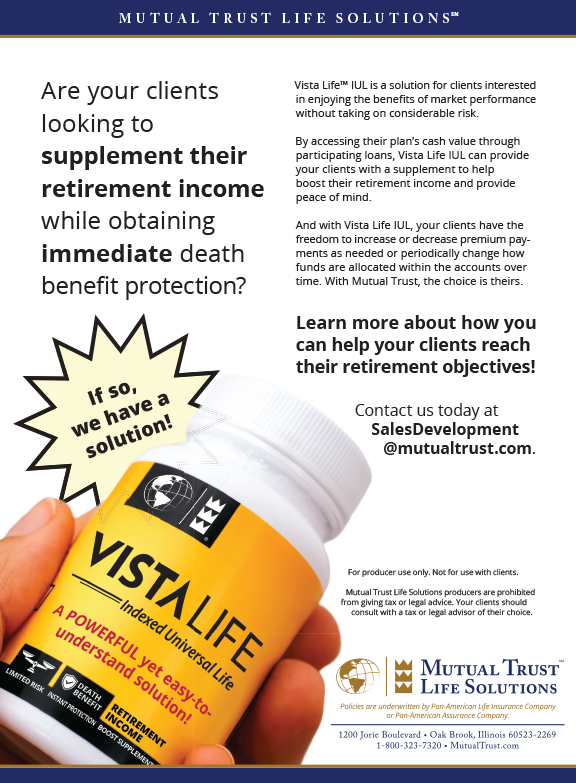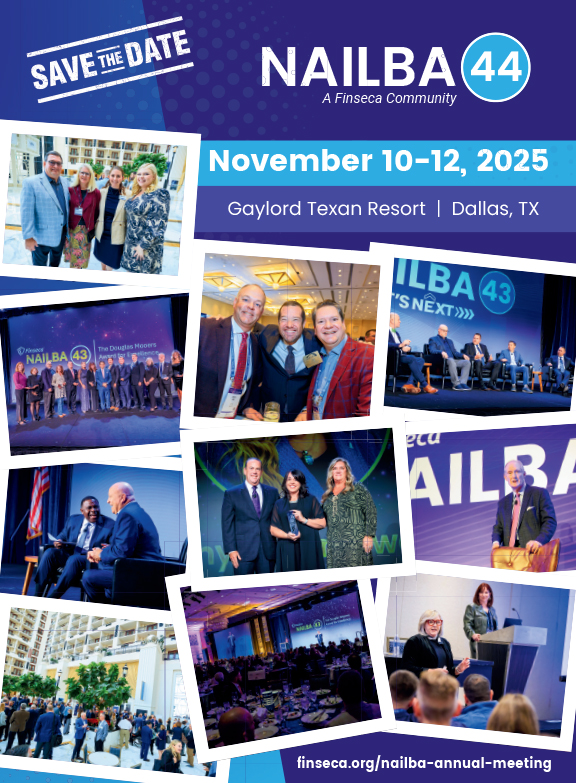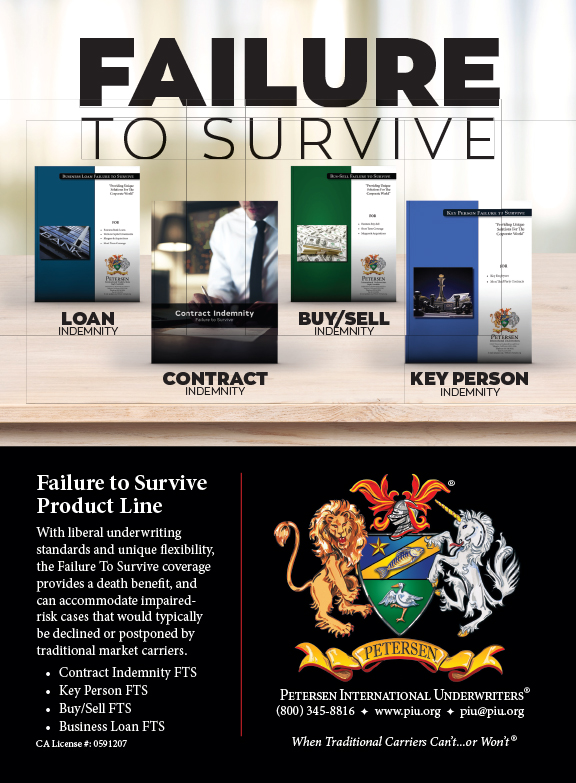The life insurance industry heavily promotes and focuses on the idea of using Indexed Universal Life (IUL), or other cash value life insurance policies, for a supplemental tax-free retirement income stream or even to “become your own bank.” However, in recognition of Life Insurance Awareness Month, I want to present a concept using Indexed Universal Life for the purpose of life insurance.
This strategy involves the use of a Premium Deposit Account to fund an Indexed Universal Life policy, with an optional future return of premium through a tax-free withdrawal, not a loan. A huge advantage is that in addition to having all premiums essentially reimbursed, the policy still provides a life insurance death benefit for their beneficiaries or supplemental funds for long term care (LTC) expenses. To demonstrate the efficiency of this strategy, I will first explain the steps and process involved, then provide a client case study to illustrate the scenario and share the projected client benefits.
First, let’s establish common ground with our current, post-pandemic, economic
environment. During the pandemic, a substantial amount of liquidity was pumped into the system through various stimulus packages. As the economy slowly reopened, the combination of significant liquidity and supply/demand imbalances caused a severe spike in inflation. In response, the Fed-raised interest rates climbed at one of the fastest paces in history to slow the economy and subdue inflation, bringing us to today.
While this interest rate cycle is negative for borrowers looking to take out loans, it has been great for savers looking to put money aside for the future. However, some weakening pockets of the economy and early stages of deflation indicate the potential chance for interest rate cuts, with experts anticipating reductions at the September FOMC meeting. The deadline for rate decreases is tight, unpredictable, and impactful. In anticipation of these rate decreases, we find many people are rushing to lock in today’s high interest rates through long term CDs, longer term bonds, or annuities. This brings us to a strategy that allows a policyholder to lock in rates and have their premiums reimbursed down the line, all while enjoying the benefits of an IUL.
The strategy begins with a one time lump sum premium to the insurance company without creating a Modified Endowment Contract (MEC). The insurance company then uses a portion of the lump sum to fund the first-year premium payment and places the remaining portion into the Premium Deposit Fund (PDF). The PDF is essentially a holding tank for the remaining premiums of the policy and a way to systematically fund the remaining premiums.
In light of today’s higher interest rate environment, the insurance company offering this PDF holding tank recently increased the discount rate to a non-guaranteed six percent. The actuaries at this specific insurance company who recently launched their new IUL product and raised the PDF rate acknowledge the fact that this rate is non-guaranteed and subject to change. However, it is likely the last lever they would pull, meaning they would most likely adjust cap or participation rates first and for people who purchased the policy today, and that the six percent rate may potentially last throughout the PDF period. Likewise, the discount method works differently from an interest rate in that the discount credits are highest at the end of the period instead of the beginning. Lastly, the PDF discount credits are taxable as ordinary income, and the owner will receive a 1099-INT.
To demonstrate this concept in more depth, I put together an example case study that will aid in understanding just how effective this strategy can be. For this scenario, the policyholder is a 50-year-old woman in great health who recently lost her husband a little over a year ago. Fortunately, her husband had life insurance. With the life insurance proceeds, she was able to pay off debt, do some home remodels, and shore up her liquidity needs. At the time she didn’t want to put the additional proceeds in the stock market and expose her money to significant risk. She knew interest rates were high roughly a year ago and she purchased a one-year CD for $250,000. That CD is coming due and she’s looking at options to better achieve her financial goals and potentially lock in today’s high rates for longer.
As for her financial goals and situation, legacy is her number one goal and she is in a solid position from a retirement income standpoint. She saw the power of life insurance with her husband who passed, and she wants to make sure her two kids are taken care of and she can leave financial assets behind for them. In addition to receiving her husband’s 401k upon his passing, she is contributing to her own 401k at her employer. However, she anticipates needing additional income in the future to help supplement her current retirement plan. Lastly, the only other missing piece of her financial plan is she doesn’t have a dedicated source or pool for potential future long term care (LTC) expenses. She doesn’t necessarily want an ongoing premium payment to pay for LTC insurance but wants to have funds dedicated for long term care should she need it down the line. Now that we’ve established her financial goals and standing, let’s apply the PDF approach laid out in the beginning to see how effective it is as a financial solution for this particular client.
In this example we recommended funding a one-time premium payment of $250,000 from the renewing CD using the Premium Deposit Fund. Based on the six percent non-guaranteed discount rate, the PDF funds premiums of $32,044 for a 10-year time frame. A total of $320,443 in premiums paid using a one-time $250,000 contribution. The policy was illustrated with the least amount of death benefit the IRS would allow to maximize how much premium will go towards cash value growth and minimize the underlying insurance fees and mortality expenses. The initial death benefit we purchased was just under half a million dollars using an increasing death benefit. A switch to level with a maximum face decrease was illustrated in policy year 11 to further squeeze down the mortality expenses.
While this is not set in stone, we illustrated the ability to take a tax-free withdrawal (not a loan) of $250,000 at age 65. To reiterate, she funds a one-time contribution of $250,000 into the PDF with $320,000 of projected premiums and takes a tax-free withdrawal of a portion of her cost basis of $250,000 at age 65. She is not locked in to taking that withdrawal amount, but we talked about the various options for her retirement at the time. Maybe it’s using the withdrawal to cover a down payment to purchase a rental property, or it’s an investment account with diversification of stocks and bonds, or maybe it’s even an immediate annuity to provide guaranteed lifetime income. Those options are open, and we’ll discuss those once we get there.
In the meantime, let’s look at the projected illustrated values of the remaining cash value and death benefit. These values are projected, non-guaranteed, and based on a six percent illustrated rate without any bonuses to show a true six percent projected return. At age 65, there’s roughly $258,000 in the remaining cash value in the policy after making her $250,000 tax free withdrawal, which again, she does not need to pay back in the future because it is not a loan.
At age 85, that projected cash value is over $750,000 and can be used for a long term care pool, whether she withdraws the remaining roughly $70k of cost basis or takes fixed or participating loans. She can also use the Chronic Illness Accelerated Death Benefit rider if she is unable to perform two of six daily living activities. Assuming the remaining funds are never used for long term care or any other purposes, there is an illustrated death benefit of over $1,000,000 at age 90 which can provide the legacy she’s looking to bestow upon her kids for the next generation.
I stress-tested this scenario by looking at the minimum rate of return required for the $250,000 tax-free withdrawal that refunds her paid premiums, excluding additional premiums from the PDF discount rate, and provides a death benefit to age 100. At a 2.60 percent projected growth rate the remaining death benefit after the $250,000 withdrawal was roughly $217,000 and sustained at that level through age 100. Keep in mind this insurance carrier is currently crediting a 5.40 percent one-year fixed rate.
To summarize, we believe the overall interest rate environment is heading lower from its current levels due to the expected Fed rate cuts, whether it’s later this year or next. This likely reduced rate environment will impact everything from online savings rates, money market accounts, CDs, annuities, and even life insurance products. Clients and prospects may like the idea of locking in today’s high rates for longer prior to these expected cuts. If interest rates do stay higher for longer, that will be a positive situation for the insurance carrier’s general portfolio which should help support cap and participation rates for IUL and dividends for whole life.
If you like this concept, there is a client friendly video you can share with your clients or prospects. Registration on LifePro.com is not required to view this video, but if you choose to, we can create a branded page complete with your company information that the shared video will be on. I encourage you to check out the growing library of 300+ education financial videos to help your clients see the value of your services and yourself as their trusted advisor.
https://www.lifepro.com/Blog/how-to-fund-an-iul-and-get-your-premium-back.










